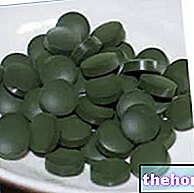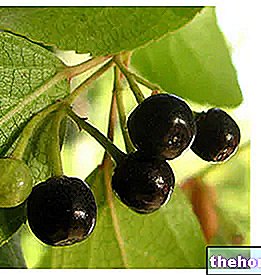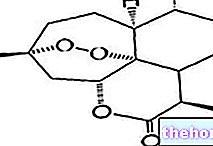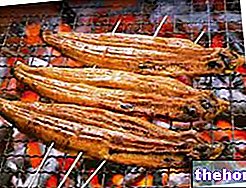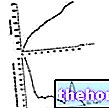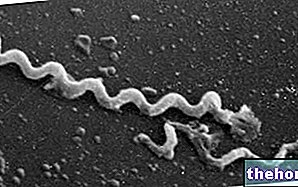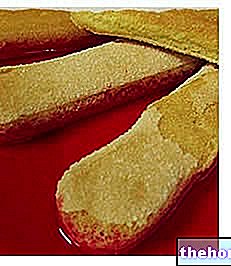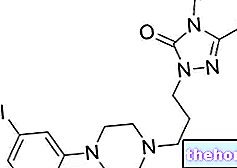Watch the video
- Watch the video on youtube
Made known by Dr. Oz - a well-known US TV personality who called it "a major step forward in natural weight loss" - Garcinia has seen a skyrocketing popularity since late 2012.

Botanical notes
Garcinia cambogia is also known by the names of Garcinia gummi-gutta, brindleberry, Malabar tamarind and Kudam puli.
The Garcinia cambogia plant looks like a medium-sized tree with a woody trunk, which grows spontaneously in tropical environments, typical of Indonesia and countries such as Vietnam, Cambodia, Philippines and southern regions of India.
The fruit from which the peel is extracted, therefore the drug, is similar to a "small pumpkin" of an intermediate color between green and light yellow.
Applications
Although garcinia has enjoyed a certain amount of media attention, by virtue of its alleged slimming effects, there is insufficient clinical evidence to indicate certain and significant effects on weight loss.
Composition of garcinia
The drug extracted from Garcinia cambogia contains:
- Pectins: viscous soluble fibers that modulate intestinal absorption, prevent constipation and act as prebiotics.
- Calcium: mineral essential for the integrity of the skeleton and for the transmission of the nervous and muscular impulses
- Carbohydrates: energetic macronutrients that provide 3.75 kilocalories per gram.
- Hydroxycitric acid (10-50% on dry matter): active ingredient characteristic of this drug which intervenes in cellular lipid metabolism.
Compared to the more common citric acid (abundant in citrus fruits and widely used by the food industry as a preservative), hydroxycitric acid is extremely rare in nature.
This substance abounds only in the fruits of plants belonging to the Garcinia genus, such as Garcinia indica, Garcinia cambogia and Garcinia atroviridis.
Properties of Garcinia cambogia
Garcinia for weight loss and against dyslipidemias
The hydroxycitric acid contained in garcinia is able to block the synthesis of acetyl coenzyme A (acetyl-CoA), an energetic substrate used by the body for the synthesis of cholesterol and other lipids. Hence its theoretically positive effect in slimming and restoring physiological lipemia.
An aid in weight control could also derive from the alleged anorectic properties of garcinia, which result in a reduction of appetite through the modulation of serotonin levels.
Effectiveness of Garcinia cambogia
Does Garcinia Cambogia Work?
As with many other supplements, the Garcinia experimentation, despite the encouraging assumptions, also led to contradictory results.
In an attempt to implement its slimming effect, it is often combined with other supplements commonly used in the treatment of overweight, such as:
- Carnitine
- Chromium picolinate
- Methylxanthines such as caffeine, in its various forms
- Alkaloids such as Ephedrine from Ephedra
- Bitter Orange Synephrine (Citrus x aurantium) etc.
On the other hand, also in this regard no significant differences have been demonstrated between the effects of garcinia and those of placebo.
In the trials that showed slight weight loss, the side effects turned out to be excessive.
Some garcinia traders claim that the association of HCA-SX (hydroxycitric acid in complex with calcium / potassium), with chromium polynicotinate linked to niacin (vitamin PP), or with Gymnema sylvestre, could increase the slimming effect. There is no significant scientific evidence in this regard.
and gastrointestinal symptoms (diarrhea, cramps, bloating, etc.), mild to moderate.
In particular, oral intake of 500 mg of PURE hydroxycitric acid four times a day can cause nausea, gastrointestinal upset and headaches.
The hepatotoxic effect underlying the alleged slimming mechanism played a negative role in the long-term sales of the product.
Moreover, if Garcinia cambogia is used in association with other so-called "slimming" supplements (especially thermogenic), it is necessary to consider the potential additive effect of the single side effects, which mainly concern the gastrointestinal tract and the nervous system.
.In particular, it seems capable of reducing (in subjectively varying quantities) plasma glucose levels.
For this reason, it is advisable to pay close attention to a possible synergistic effect between garcinia and hypoglycemic drugs commonly used in the treatment of type 2 diabetes mellitus.
Some are:
- Sulfonylureas
- Glinids
- Biguanides
- Glitazones
- Alpha glucoside inhibitors
- Exenatide
- Sitagliptin
- Synthetic (injectable) insulin.
However, deciding to take Garcinia cambogia, medical advice is recommended.
Notes: it is advisable to start the integration with a low dosage and, if necessary, increase it gradually.
There have been several case reports of patients developing "serotonin syndrome" after combining "serotonergic drugs" with Garcinia cambogia.
Therefore, caution should also be used when treating the following drug classes:
- SSRIs: such as fluoxetine, paroxetine, escitalopram and sertraline
- Tricyclic antidepressants (TCAs): Doxepine, amitriptyline etc.
- Dextromethorphan: A common cough suppressant found in many cough syrups
- Pethidine
- Pentazocine
- Tramadol.

